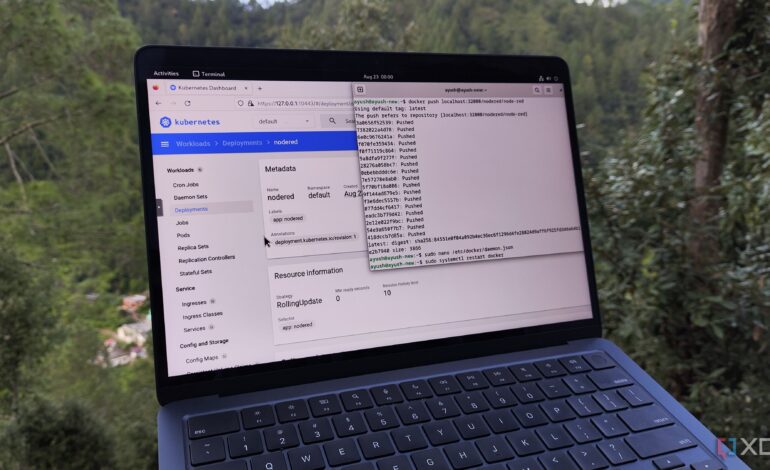Discover Top 5 Linux Distros for Building Kubernetes Clusters

The growing demand for containerized applications has made Kubernetes a leading choice for managing and orchestrating these environments. With its ability to deploy, scale, and manage clusters of containerized apps, Kubernetes has become a vital tool for developers and tech enthusiasts alike. This article explores five of the best Linux distributions for building Kubernetes clusters, catering to both newcomers and seasoned professionals.
Raspberry Pi OS: Compact Power for Kubernetes
Raspberry Pi boards have gained recognition for their capability in containerization projects. Utilizing a few Raspberry Pi single-board computers (SBCs) alongside a router, users can establish a modest Kubernetes cluster. The Raspberry Pi OS stands out due to its solid pre-installed packages and impressive performance. For optimal results, it is advisable to use the command-line interface (CLI) version, as graphical interfaces can consume unnecessary CPU and memory resources. Additionally, adding the cgroup_memory=1 and cgroup_enable=memory flags to the /boot/firmware/cmdline.txt file can enhance the operation of MicroK8s on this OS.
Harvester and Rancher: A Robust Combo
The Harvester virtualization platform integrates seamlessly with Rancher, an enterprise-level toolset for managing Kubernetes environments. This combination serves as an excellent option for those looking to deepen their skills in container orchestration and automation. An experimental add-on, rancher-vcluster, allows users to create a Kubernetes cluster or K3s cluster while deploying the Rancher management interface inside a virtual machine. Alternatively, users can opt for Rancher’s RKE2 distribution on virtual machines hosted through Harvester. However, the substantial resource requirements of Harvester may pose challenges for running a reliable Kubernetes cluster.
Debian: Stability and Reliability
Unlike the more avant-garde nature of distributions like Arch or the unique design of Qubes OS, Debian offers a straightforward and dependable option for Kubernetes workloads. Known for its stability, Debian provides strong compatibility with Arm devices, making it an ideal choice for harnessing Kubernetes’s capabilities on various SBCs beyond Raspberry Pi.
Fedora CoreOS: A Minimalist Approach
Initially developed as CoreOS before being acquired by Red Hat, Fedora CoreOS re-emerged in 2020 as a minimal distribution tailored for container-heavy workloads. It supports essential tools like Podman, CRI-O, and Docker’s CLI out-of-the-box, which saves users from the hassle of manual installations. Configuration is straightforward, allowing users to modify settings and add packages using a JSON code format in the Butane config document. Furthermore, Fedora CoreOS offers various recovery options, ensuring stability during system updates.
Talos Linux: Security and Performance
For those seeking a distribution specifically designed for Kubernetes clusters, Talos Linux is a top choice. It replaces traditional shell interfaces and SSH protocols with an API-based setup, bolstered by mutual TLS (mTLS) authentication and a read-only root filesystem. The setup process for Kubernetes on Talos Linux is user-friendly, utilizing declarative YAML files for modifications to both control and worker nodes. Its small footprint allows Kubernetes to utilize most system resources for container orchestration tasks effectively.
While my personal preferences lean towards Talos Linux, Debian, and Raspberry Pi OS when building my Kubernetes clusters, other distributions are worth exploring. DietPi is a minimalistic option that can transform low-spec SBCs into reliable container hosts. Additionally, Alpine Linux is a lightweight distribution, though its reliance on the musl library and openrc init system may present compatibility challenges.
As the landscape of containerization continues to evolve, these five Linux distributions provide diverse options for creating effective Kubernetes clusters, catering to various user preferences and requirements.






